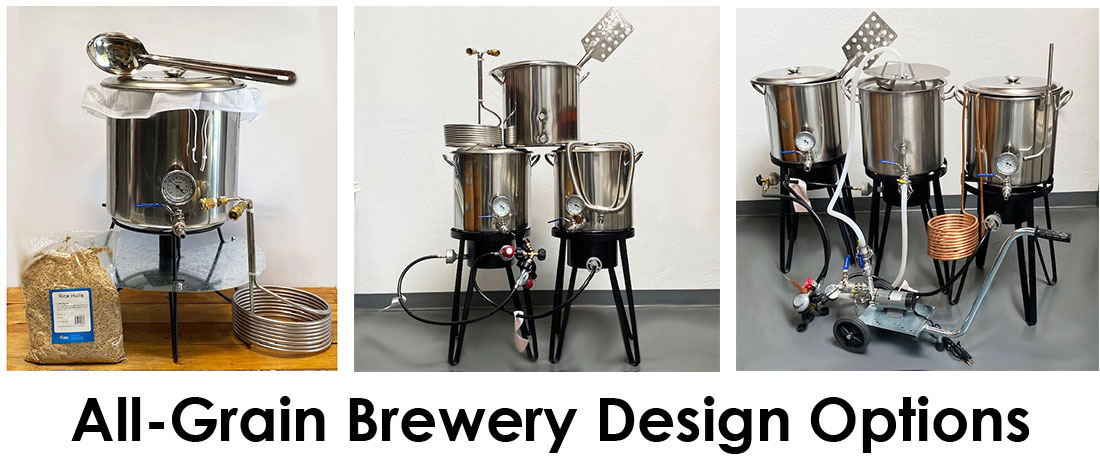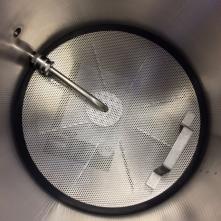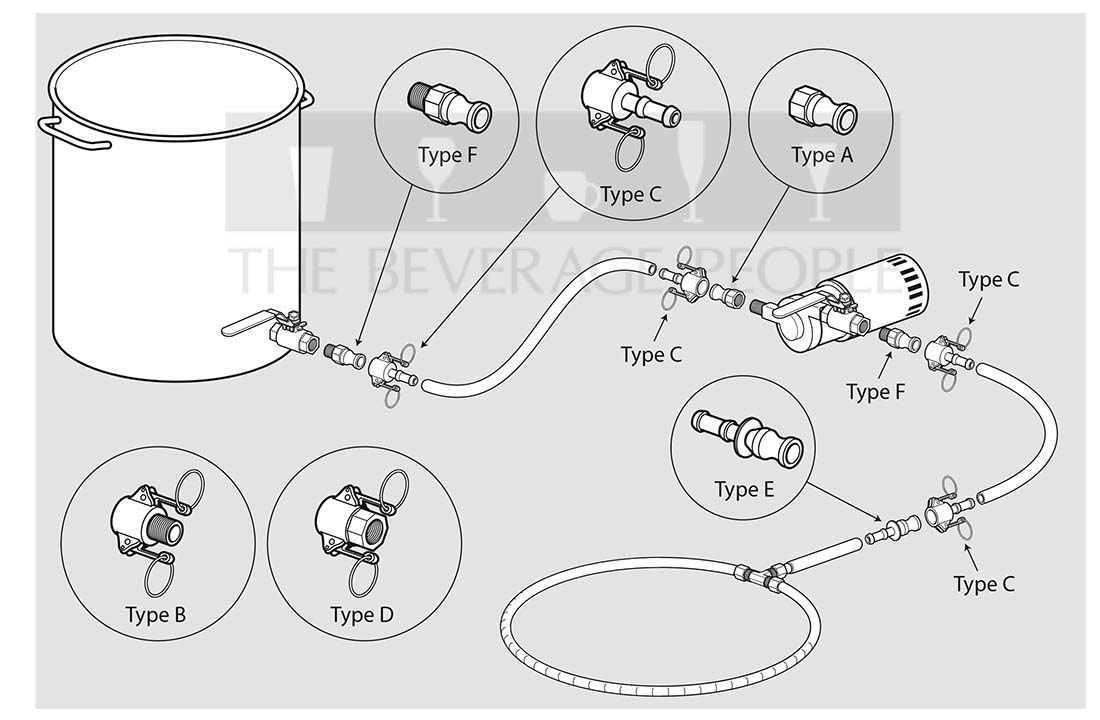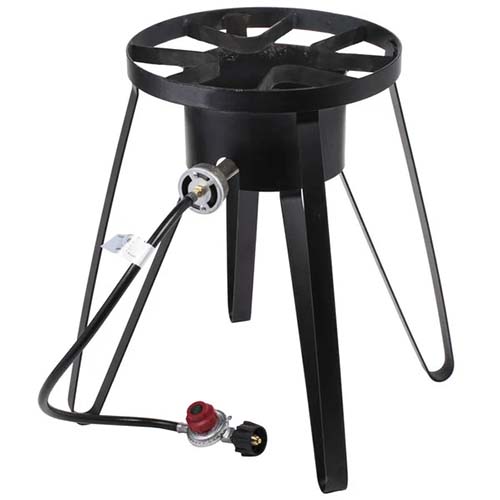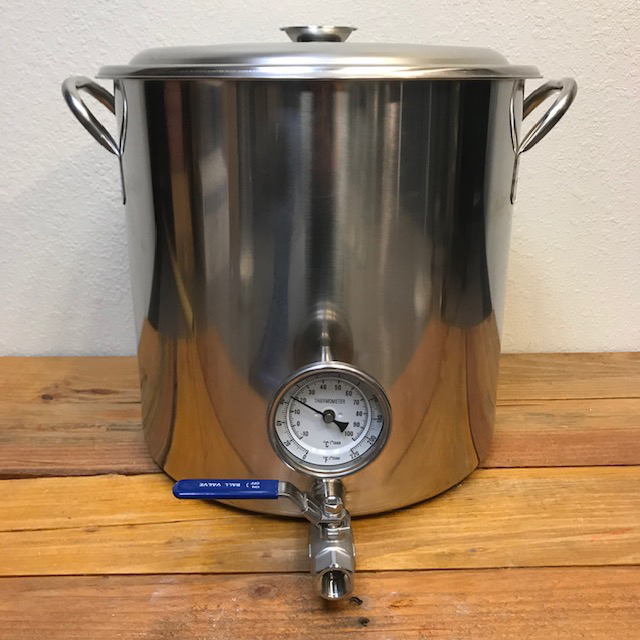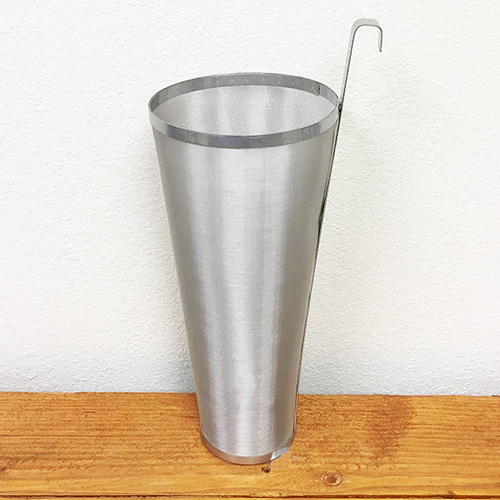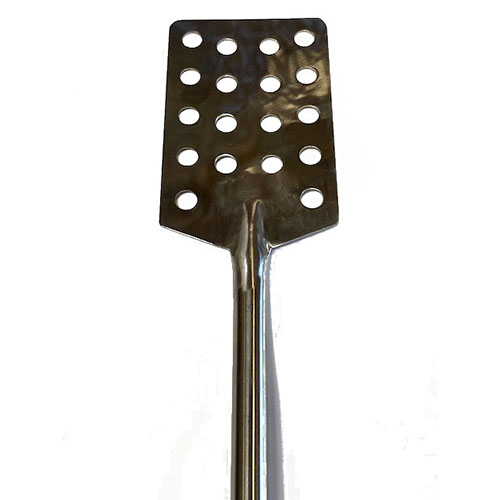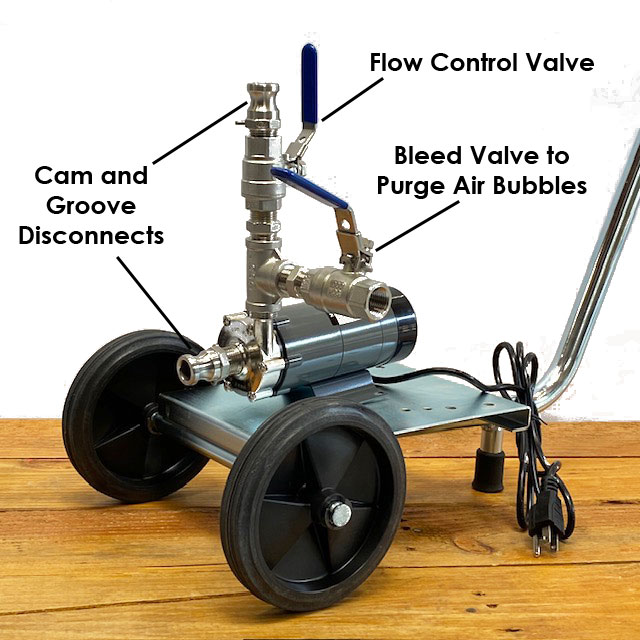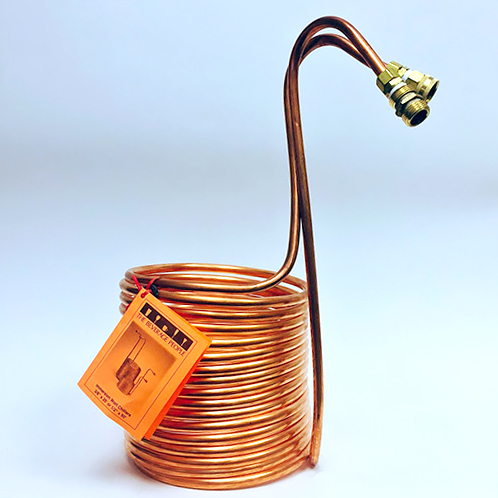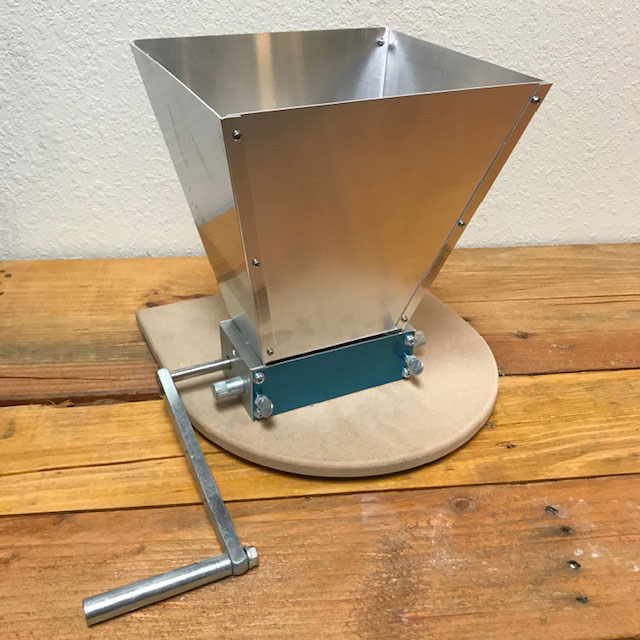All Grain Brewing Equipment > Brewery Design Options
Considerations for All Grain Brewery Design
Mash Tun Design
This vessel should be fitted with a valve to allow for extraction of the wort from the mash. Options include stainless kettles with welded ports, or insulated cooler fitted with a straining device and valve. Depending on the vessel design, one or more strainer/false bottom options may be available.
Heat Source
Kitchen stoves can be used. Most brewers prefer outdoor propane fueled burners. Also, electric kettles are used in some systems.
Kettles for Sparge Water and Boiling Wort
A traditional all grain brewery will have three vessels: a hot liquor tank (containing hot water for sparging), a mash tun, and a boiling kettle.
Sparging
The hot water from the hot liquor tank must be gently transferred to the mash tun in some way. Options include:
◉ Pouring gently
◉ Using gravity to create a "shower"
◉ Transferring by hose with a diffusion plate attached to the end for gentle entry into the mash.
Mash Reciculation and Whirlpooling (Optional)
A magnetic drive brewing pump can be fitted with high-temp silicone tubing and attached to kettles and different exit fittings to allow for mash recirculation to improve clarity, as well as boil kettle recirculation to whirlpool aromatic hops and speed the cooling process. Trolley for the pump is also available.
Transferring - Gravity vs. Pumping
Transferring the liquid from vessel to vessel can be done with gravity, or with a magnetic drive brewing pump. A pump provides the advantages of working with a single level brewery at a height of your choosing, as well as the ability to clarify the wort in the mash tun through recirculation, the ability to whirlpool aromatic hops in the kettle, and speed up the wort chilling process. Gravity, on the other hand, is quite simple to work with and 100% reliable.
Stirring
All grain recipes cannot be stirred with a typical kitchen spoon. Brewing paddles are available for stirring the large volumes of grain and wort.
Chilling
A wort chiller allows for rapid cooling of the wort at the end of the boil. They are available in copper and stainless steel, in different sizes appropriate for 5 and 10 gallon batches.
EXAMPLE BREWERY SYSTEMS
Economy All-Grain 5 Gal Brewing System - Single Burner
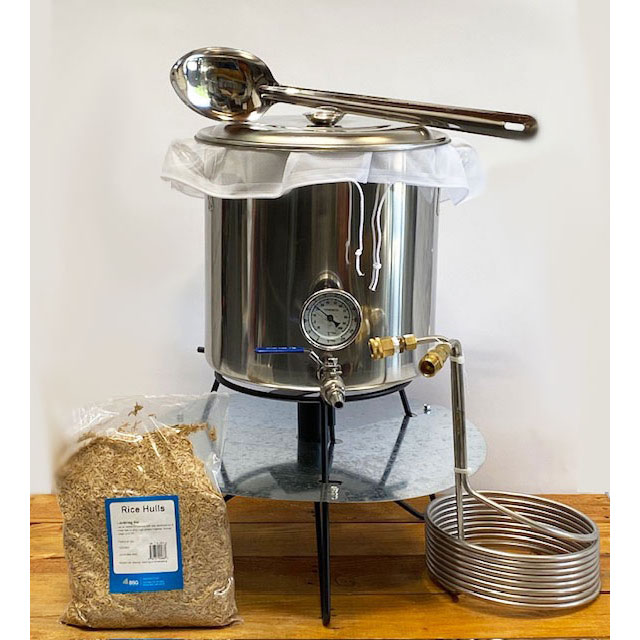
The most economical systems are based on the technique of Brew-in-a-Bag (BIAB). In this type of system, a large nylon bag lines the mash tun kettle to allow for straining the grains. Sparging may or may not be performed. Click for more details...
Economy All-Grain 5 Gal Brewing System - Two Burner
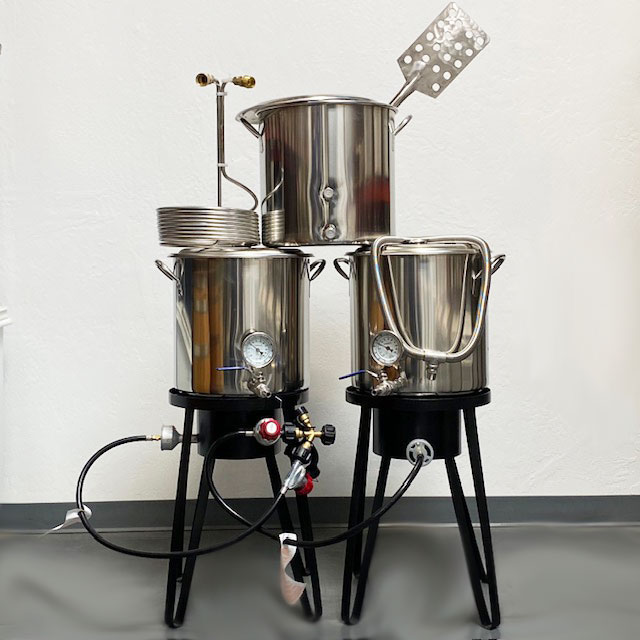
By adding a second burner, a traditional continuous sparge brewing system can be created. Gravity will be used for the transfer of liquids, and heavy lifting will be needed to use just two burners to heat three different vessels. Click for more details...
Premium All-Grain 5 Gal Brewing System - Three Burner
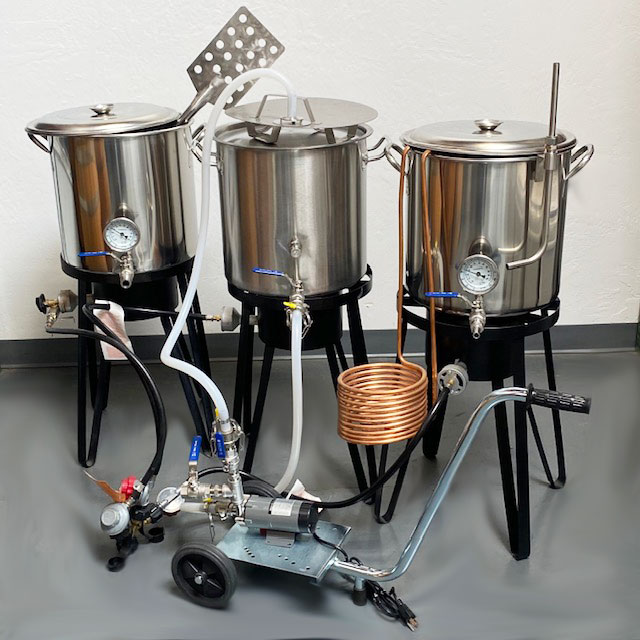
Most complete all grain breweries include three heating elements to allow for the heating of all three brewing vessels: hot liquor tank, mash tun, boiling kettle. This system incorporates a magnetic drive brewing pump (or two) to gain the comforts of brewing on a single level, and the quality improvements from recirculation. Click for more details...
Or...Design Your Own System
Now that you have reviewed the basic components of an all-grain brewing system, and considered our example systems above, you might choose to select your own components to complete your system. The individual components can be found here to design a system customized to your preferences.

